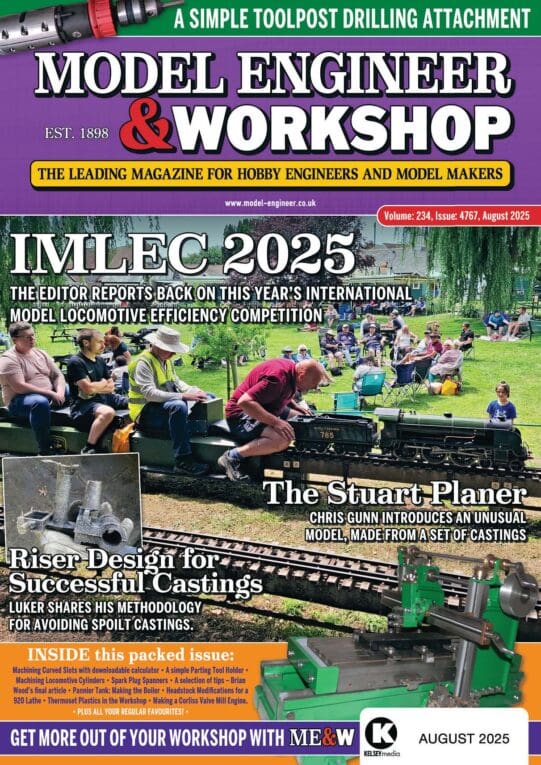On
10 August 2024 at 05:01 Hopper Said:
Chrome and brass is a good bearing combination. I would use that.
Yes, bronze will wear less and last longer, but for a model running under no work load for occasional use, the brass should be fine. If it were to wear out at some time in the future, then you could put in a bronze sleeve.
Spot on!
The amount of wear experienced by a model engine of this type is usually teeny weeny tiny, because the run time and workload are both likely to be low.
Usual for bearings to be made of a softer metal in combination with a harder one. Brass was the original bearing metal, so common in the 19th century that bearings were called ‘brasses’. Not sure why they preferred Brass to Bronze and guess it was to do with the lubricants available – mineral oils, and scientific study of wear and tear changed the rules. Pistons and cylinders are a special case, not least because they run hot, with high-pressure steam engines rapidly adopting piston rings. There are made of a softer or harder material than the cylinder, with some form of lubrication. Cast-iron rings in steel plus a dash of steam oil works well. But keep scale in mind – at Rainhill Stephenson’s Rocket was required to reliably pull a 20 ton load at 10mph minimum. In contrast the amount of wear experienced by a model Stirling is trivial. However, model Stirling engines are also low power, making it helpful to fit low friction bearings. I don’t think that need extends to the piston/cylinder – chromed brass in brass should be fine.
If possible I’d Chrome the cylinder rather than the piston, because it’s easier to turn and lap a replacement brass piston than it is to bush a cylinder. In principle the soft part should be whatever is easiest to replace!
Dave
SillyOldDuffer.







